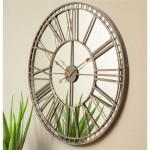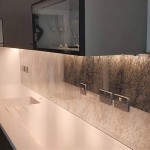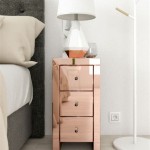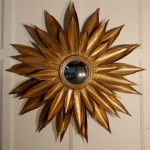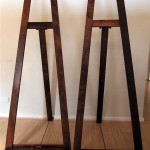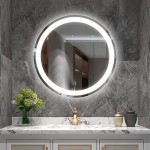Fog Resistant Mirrors: A Clear View, Regardless of the Conditions
Fogged mirrors are a common nuisance, encountered daily in bathrooms after hot showers and in vehicles during humid or cold weather. This obscuring film of condensation disrupts daily routines and can even pose safety hazards while driving. Fog-resistant mirrors offer a practical solution, providing consistently clear reflections regardless of ambient conditions.
These specialized mirrors utilize various technologies to prevent fog formation. Understanding these mechanisms can help consumers make informed decisions when selecting the best fog-resistant mirror for their needs.
Heating Elements: Warming Away the Fog
Many fog-resistant mirrors incorporate a low-voltage heating element. This element gently warms the mirror surface to a temperature slightly above the surrounding air's dew point. This prevents water vapor from condensing on the mirror's surface, thus eliminating fog. The heating element is typically installed behind the mirror, concealed within its construction, and activated by a switch, a timer, or automatically triggered by a humidity sensor. These mirrors are particularly effective in bathrooms, where steam from showers is the primary cause of fogging.
Different types of heating elements exist, including resistive wire and printed film heaters. Resistive wire heaters are a cost-effective option, while printed film heaters offer more uniform heat distribution. The wattage of the heating element influences the speed and efficiency of fog dissipation, with higher wattage typically resulting in quicker clearing.
Hydrophilic Coatings: Attracting Water to Prevent Fog
An alternative approach to fog prevention involves the use of hydrophilic coatings. These coatings are applied to the mirror's surface and attract water molecules. Instead of forming tiny droplets that scatter light and create fog, the water spreads evenly across the coated surface, forming a thin, transparent film. This film does not interfere with reflectivity, ensuring a clear image.
Hydrophilic coatings are often composed of titanium dioxide or silica nanoparticles. These materials exhibit strong hydrophilic properties, effectively preventing the formation of light-scattering droplets. Mirrors with hydrophilic coatings are often preferred for applications where electrical connections are difficult or impossible, such as in certain automotive mirrors or portable vanity mirrors.
Ventilation: Air Circulation for Fog Prevention
While not strictly a feature of the mirror itself, proper ventilation plays a crucial role in preventing fog formation in areas prone to high humidity. Effective ventilation reduces the amount of water vapor in the air, minimizing the potential for condensation on surfaces, including mirrors. In bathrooms, exhaust fans can significantly reduce fogging by quickly removing steam. In vehicles, defroster systems direct warm, dry air onto the windshield and often side mirrors, preventing condensation.
Combining ventilation with other fog-resistant technologies, such as heating elements or hydrophilic coatings, can offer the most comprehensive approach to ensuring clear mirror visibility in challenging environments.
Choosing the Right Fog-Resistant Mirror
Selecting the appropriate fog-resistant mirror depends on several factors, including the specific application, available power sources, and budget. For bathrooms, heated mirrors are a popular choice, offering rapid and effective fog clearing. In automobiles, both heated mirrors and mirrors with hydrophilic coatings are commonly used depending on the vehicle’s design and features.
Considering the size and shape of the mirror is also important. Heated mirrors are available in a wide range of sizes and shapes, while hydrophilic coatings can be applied to various mirror types. The installation process also varies depending on the technology used. Heated mirrors typically require electrical wiring, while mirrors with hydrophilic coatings generally require simpler installation.
Maintaining Fog-Resistant Mirrors
Proper maintenance is essential for preserving the effectiveness of fog-resistant mirrors. Heated mirrors should be cleaned with non-abrasive cleaners to avoid damaging the heating element or reflective surface. Mirrors with hydrophilic coatings require specific cleaning procedures to maintain the integrity of the coating. Following manufacturer recommendations for cleaning and maintenance is crucial for ensuring long-term performance and preventing premature degradation of the fog-resistant properties.
Regular cleaning not only maintains the mirror's clarity but also helps to prevent the buildup of mineral deposits or other contaminants that can interfere with the fog-resistant technology.

Aqua Fog Free Mirror Electric Lighting Company

Acclaim Fog Free Mirror Electric Lighting Company

Command Fog Resistant Mirror Clear 1 2 Water Strips Com

Acclaim Fog Free Mirror Electric Lighting Company

Aqua Fog Free Mirror Electric Lighting Company

Acclaim Fog Free Mirror Electric Lighting Company

Command Fog Resistant Mirror Clear 1 2 Water Strips Com

Command Fog Resistant Mirror With Water Strips Bath15 Ef 3m

Simple To Get Fog Free Mirrors Family Handyman

Aqua Fog Free Mirror Electric Lighting Company
